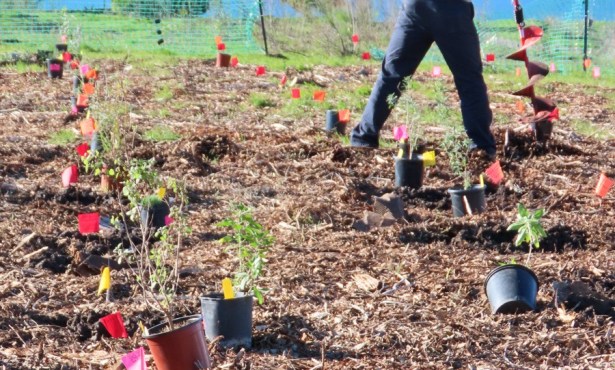Contract Glitch Blocks Air Tanker Drops
Failure to Finalize Deal Keeps Santa Maria Airport Off-Limits to Firefighting Tankers

A failure by the U.S. Forest Service to renew its contract with a company servicing firefighting air tankers at the Santa Maria Airport has kept that airport off limits to fixed wing planes deployed by CalFire during the initial 24-hours of the fight against the Jesusita Fire. As a result, the fixed wing planes dropping retardant on the Jesusita Fire were forced to re-load and re-fuel in Porterille, rather than Santa Maria. The trip from Porterville to Santa Barbara takes roughly one hour while the flight from Santa Maria is closer to 20 minutes. The extended turn-around time has limited the number of retardant drops that can be made during the initial stage of the fire.
UPDATE: According to the U.S. Forest Service’s John Bridgewater, the Santa Maria Airport opened for firefighting business around 11 a.m.
According to Jim Kunkle, who owns the concession at the Santa Maria Airport for the air tankers, three fixed wing planes landed in Santa Maria, reloaded and refueled before it became clear that the Forest Service contract with the company ICL, which manufactures the retardant and provides the personnel to mix it and load it onto planes, had not been renewed. After that, Kunkle said, the planes were dispatched to Porterville, 110 miles away. It remains unclear the exact extent to which this change affected the number of loads that were dropped by the two air tankers deployed Tuesday and the four that were deployed Wednesday.
Forest Service spokesperson Andrew Madsen explained that the Santa Maria contract would typically run concurrently with fire season, which officially starts May 15. Because fire season is beginning earlier – the Jesusita Fire started on Tuesday, May 5 – Forest Service officials in charge of contracts find themselves falling behind the needs of firefighters.
“This is a happening all over the country,” said Madsen, who explained that he was hopeful the problem could be rectified by an emergency decree recently issued by the Forest Service. He was optimistic that Santa Maria could become the deployment base for air tankers as early as noon on Wednesday. “We’re working to get this straightened out as quickly as possible,” he said, “but I’m not positive when that will be.”
The contract renewal was the subject of considerable controversy earlier this year when the Forest Service opted to renew the Santa Maria operation on an “as needed” basis, as opposed to the full service contract the Forest Service has had for the past two years. Kunkle complained to U.S. Senator Diane Feinstein and Congressmember Lois Capps that the downgrade would hamper firefighting efforts. He was joined in his concerns by the Santa Barbara County Association of Fire Chiefs.
Los Padres Forest Supervisor Peggy Hernandez defended the change, contending it would reduce inefficiencies and redundancies in service without compromising safety. Under the terms of either type of contract, the Santa Maria Airport should be able to service firefighting air tankers within four hours notice. Most bases throughout the state operate on a 24-hour stand by, noted Madsen.
This particular controversy doesn’t prove either side of the debate right or wrong. That’s because neither contract was ever signed. Madsen said that as soon as the City of Santa Maria agrees to provide the water needed to mix with the powdered retardant, service can resume from the Santa Maria airport.
Santa Maria took over the contract in 2007, when Forest Service officials concluded the Santa Barbara Airport was too small and too congested to provide tanker service anymore. Local firefighters have lamented Santa Barbara’s loss to Santa Maria. But in this instance, they’re even more upset, given the additional time it takes tankers to fly back to Porterville, reload, and then fly back for another drop. A round trip to Santa Maria is estimated at half-an-hour; to Portersville it’s closer to two hours. That does not include the time it takes to pump another load of fire retardant.
The number of additional loads that could have been dropped, had the supply base been in Santa Maria, remains the subject of conjecture, as is the effect those additional trips would have had on actual fire suppression.
For more info, see independent.com/jesusita or tune into KCSB 91.9 FM. Readers are encouraged to submit their own stories and photographs to fire@independent.com.



